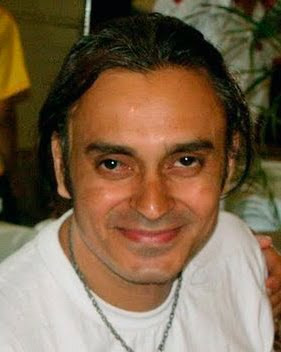http://www.asiaarts.ucla.edu/090501/article.asp?parentID=107769
Waking Life and Death: Children of the Pyre review
By Rowena Aquino
Winner of the Grand Jury Prize for Best Documentary, Rajesh S. Jala's Children of the Pyre takes a direct approach to documenting the lives of children born to work at the Makarnika Cremation Grounds.
The startling documentary Children of the Pyre arrived at the IFFLA last weekend to present the unsettling yet undeniably affecting lives of seven young boys who are among some of the children who work in Varanasi, Banaras, India as cremators. Filmed over the course of 18 months in the "busiest" and most sacred cremation ground in India – the Makarnika Cremation Grounds – located along the banks of the Ganges River, filmmaker Rajesh S. Jala's latest feature-length documentary upends and redefines the meaning of "direct" in direct cinema and its observational, non-interventionist style.
The film is nothing but direct in speaking with and filming the 7 children, in showing the process of cremation, and even close up shots of burning bodies. At the same time, there is no attempt to hide the presence of Jala and the camera mediating the boys' lives. In individual interviews, some of the children like Ravi express desire to end the conversation to go off and do something else, or call Jala on possible prejudice – against, for example, the fact that a majority of the boys smoke marijuana. As such, what one sees on the screen never translates as the result of a claim that "these images give an over-arching view" of these children's lives. The camera does not serve here as a kind of morbid avatar to experience living in and off of funeral pyres like the children, only to stamp upon it during the editing process a narrative arc of happy closure where the children "get out" -- so that spectators can feel good about having watched wretched conditions while not being in the same situation.
So let's say the obvious: the problem with most documentary films that deal with some kind of explicit content, especially when children are involved, is the impulse to contain the subject within the film – by tracing an all's-well-that-ends-well arc for drama's sake. Not that I don't want a happy ending – who doesn't? But the danger, even hypocrisy, in participating in harsh living conditions while filming people and situations is that the rush to the happy ending can all but eclipse the actual everyday lives of those who, unlike the camera (because it isn't human) and unlike the filmmaker (because…well, s/he is a filmmaker), cannot or do not move out. Certainly, Jala wants to help these children and bring heightened awareness to the kind of social system that conditions and perpetuates such child labour. I don't question that. But what I appreciate most about Children of the Pyre is its understanding of the power of "present tense" filmmaking that direct cinema made all but the norm, while realising that direct cinema's "crisis" structure is at the very least defective and suspect.
Jala filmed over 100 hours of footage with the children, their respective families, and the locals that live or work in and around Makarnika. But the resulting film never leaves the cremation grounds, a decision that condenses the visual force of the subject, principally because the children more or less live, work and sleep there. And yes, visually, Children of the Pyre is a difficult film to watch. It's very physical, sensual, in the sense of being aware of the materiality of the body.
Images of the body abound, that result from this mode of living to which the children are more or less born (they are members of the "Dom" community – considered to be "untouchables"): some of the children's bodies are pockmarked due to constant exposure to the pyres (100-150 bodies are burned daily); body parts become detached as the pyre blazes; the burning of skin; the children's faces covered in sweat; the dancing body of a woman on a stage for a festival, located next door to the cremation grounds; Gagan, one of the boys, dancing himself, energetically, perhaps even joyously – to such a degree that he isn't aware of his talent; the piles of silk shrouds that cover the dead, which the boys snatch expertly in order to sell for their livelihood.
"Mode of living," "livelihood"? More like survival.
Visually, Children of the Pyre is a difficult film to watch.
Followers
Director and Cinematographer

Rajesh S. Jala
Editor

Sheetal Koul
Additional Camera

Giriraj Sharma
1st Asst. Director

Krishna Sharma
Copyright 2010 Children of The Pyre
Design: Webdesign
Design: Webdesign
0 comments to "asia pacific arts" says
Post a Comment